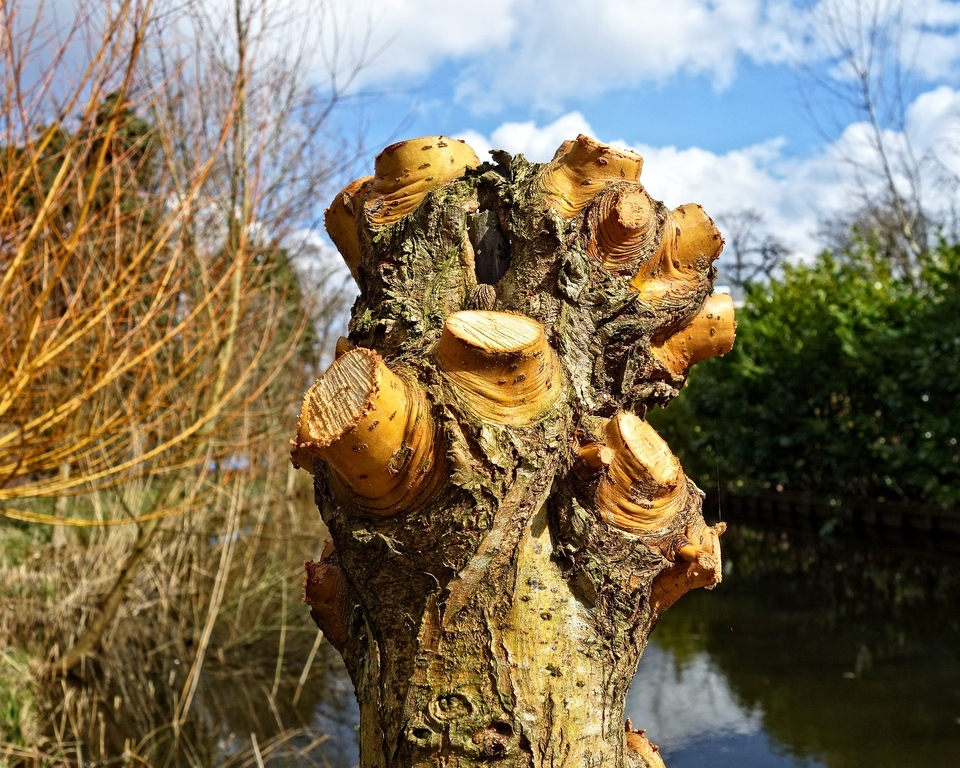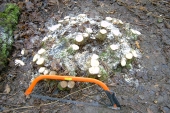
 3
3








Invasive plants are Earth's way of insisting we notice her medicines. Stephen Herrod Buhner
Everyone learns what works by learning what doesn't work. Stephen Herrod Buhner
 1
1




Moderator, Treatment Free Beekeepers group on Facebook.
https://www.facebook.com/groups/treatmentfreebeekeepers/






 1
1




Ian Thompson wrote:We could not just go in and pollard because the specimens in the wooded areas are too large to just go in and pollard and expect healthy results.
One argument I heard against it was essentially “if it worked people in the past would have done it, they did not do it, so it does not work”. I do not think argument is compelling. There were a great many things that are different between modern times and the past when resprout management was more common, including more people living in or near the wooded areas and actively protecting the copses from the ungulates decimating them.


How Permies works: https://permies.com/wiki/34193/permies-works-links-threads
My projects on Skye: The tree field, Growing and landracing, perennial polycultures, "Don't dream it - be it! "




Michael Cox wrote:"resprout management" as you term it is what I think would be called coppicing in the UK. The trees are cut to ground level and resprout from the stool, making multistemmed straight poles for fencing etc... Particularly prevalent in sweet chestnut and hazel woodlands.
From my direct personal experience, I'm not sure how effective polarding would be, largely because the root systems tend to be shallow and prone to collapse. I suspect that the altered weight distribution might change things. Maybe experiment on a patch for comparison?
 1
1




I'm not sure where they are coming from here. Pollarding is certainly an anti-browse tradition in the UK and parts of Europe if not in the US. It's not done so much these days since the profit isn't in the wood in the same way - cheaper to clear cut softwoods or grow crops/animals for quicker payback on the land. Evidence of previous pollarding is extensive from willows along the Thames, to sweet chestnuts now in the centre of towns. It is still done in many places to reduce crown size in towns and for wildlife or tree conservation reasons. The whomping willow in Harry Potter film was obviously pollarded!












 1
1




Ian Thompson wrote: I might be wrong, but it is my understanding that cutting a tree at say five foot is more detrimental to the tree than coppice cut, especially if those trees are approaching the 8 to 10 inch diameter stage. If one wants to pollard, I believe it is better to begin the cuts much earlier in the tree's life with specific pruning cuts that promote a healthy pollard. Some species may respond better to severe cut than others though.
How Permies works: https://permies.com/wiki/34193/permies-works-links-threads
My projects on Skye: The tree field, Growing and landracing, perennial polycultures, "Don't dream it - be it! "
 1
1




Nancy Reading wrote:
Ian Thompson wrote: I might be wrong, but it is my understanding that cutting a tree at say five foot is more detrimental to the tree than coppice cut, especially if those trees are approaching the 8 to 10 inch diameter stage. If one wants to pollard, I believe it is better to begin the cuts much earlier in the tree's life with specific pruning cuts that promote a healthy pollard. Some species may respond better to severe cut than others though.
I'm no expert either - and this sort of thing may well be species and climate specific. Have a look at the link that quotes part of the British standard - the site was someone who was pollarding his trees for the first time. For some reason I thought that your trees were more mature.
 1
1




Seed slanging, dirt sniffer
 1
1




Anne Miller wrote:I like the idea of pollarded woodland though I don1t understand how this will decrease deer depredation.
Can you go into further details as why this might work?
 1
1




Revo Smith wrote: I've been thinking about experimenting with some coppiced and Pollard trees.
My only input regarding deer pressure is that a Pollard tree may have its new growth and foliage up over the reach of deer, but if the trunk is not going to be fenced, it will be exposed to deer attack. The risk of tree death may be higher if the trunk gets damaged.
With coppicing, the risk of new growth and foliage being damaged may be much higher, but if the coppiced tree is able to spread and mature, the density of branches would prevent the deer from killing the tree as they would only browse on the exterior branches.
I would put in fences either way. If I went coppiced, I would fence the perimeter of the expected new growth. I think fencing a Pollard would be easier. Only requiring, a fence around the main trunk below the Pollard cut.
I guess once you get going with either method, you'll eventually have plenty of small diameter wood to make lots of fencing. Might need to buy a few hundred feet of hardware cloth to get started though.
Good luck and keep us up to date on your project!








Invasive plants are Earth's way of insisting we notice her medicines. Stephen Herrod Buhner
Everyone learns what works by learning what doesn't work. Stephen Herrod Buhner




Anne Miller wrote:Did the pollarded woodland work this summer? Will this method be continued next spring/summer?

|
Oh sure, it's a tiny ad, but under the right circumstances, it gets bigger.
montana community seeking 20 people who are gardeners or want to be gardeners
https://permies.com/t/359868/montana-community-seeking-people-gardeners
|





